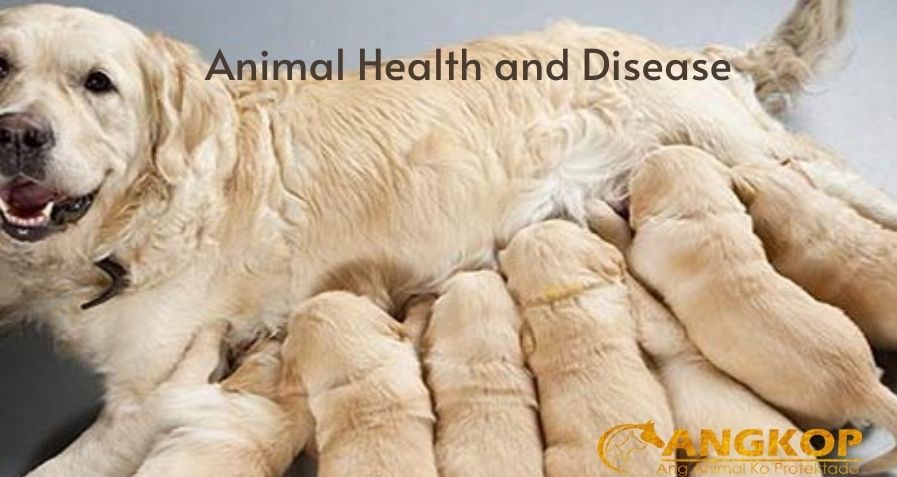Mastitis

Issues
Mastitis
- Bacterial infection of one or more lactating glands.
- Result of ascending infection, trauma to the gland, or hematogenous spread.
- Escherichia coli, Staphylococci, and β-hemolytic streptococci—most commonly involved. Mycobacterium and blastomycosis reported.
- Potentially life-threatening infection; may lead to septic shock.
- Sepsis—direct effect of mammary glands with systemic involvement.
SIGNALMENT
- Postpartum bitch and queen
- Pseudopregnant lactating bitch or queen (rare)
SIGNS
Historical Findings
- Anorexia
- Lethargy
- Neglect of puppies or kittens
- Failure of puppies or kittens to thrive
- Physical Examination Findings
- Firm, swollen, warm, and painful mammary gland(s) from which purulent or hemorrhagic fluid can be expressed.
- Fever, dehydration, and septic shock—with systemic involvement.
- Abscessation or gangrene of gland(s) can result.
CAUSES & RISK FACTORS
- Ascending infection via teat canals.
- Trauma inflicted by puppy or kitten toenails and teeth.
- Poor hygiene.
- Systemic infection originating elsewhere (e.g., metritis).
- Rarely secondary to fibroadenomatous hyperplasia in queens.
DIAGNOSIS
DIFFERENTIAL DIAGNOSIS
- Galactostasis—no systemic illness; cytologic examination and culture of milk help with differentiation.
- Inflammatory mammary adenocarcinoma—affected gland does not produce milk; differentiated by biopsy.
CBC/BIOCHEMISTRY/URINALYSIS
- Leukocytosis with left shift
- Leukopenia—with sepsis
- Mildly high PCV, total protein, and BUN—with dehydration
IMAGING
- Ultrasonography reveals loss of distinct layering of normal tissue in glands, decreased echogenicity, increased heterogeneity, and altered blood vessel density on color Doppler.
- Color Doppler can assist in prognosis—loss of blood vessels in inflamed areas predicts progression to gangrene.
OTHER LABORATORY TESTS
Culture—identification and sensitivity of microorganisms from milk of affected glands; screening for methicillin-resistant Staphylococcus aureus recommended.
DIAGNOSTIC PROCEDURES
- pH of milk—normally slightly more acidic than serum, may become alkaline with infection.
- Cytology—neutrophils, macrophages, and other mononuclear cells can be observed in normal milk; the presence of large numbers of free and phagocytosed bacteria and degenerative neutrophils is noted with septic disease; bacterial culture to identify the organism and sensitivity pattern.
TREATMENT
- Inpatient until stable.
- Puppies and kittens—neonates may be allowed to continue nursing unless glands are necrotic or dam is systemically ill; affects choice of antibiotics; monitor weight gain in neonates: pups should gain 10% of birth weight per day, kittens should gain a minimum of 7–10 g/day.
- Dehydration or sepsis—intravenous fluid therapy.
- Correct electrolyte imbalances and hypoglycemia.
- Treat shock, if present.
- Apply warm compress and milk out affected gland(s) several times daily.
- Cover glands with friable tissue to prevent excoriation if nursing is allowed.
- Application of cabbage leaf wraps to affected glands may speed resolution.
- Abscessed or gangrenous glands—require surgical debridement, with or without negative pressure wound therapy.
- Open wound management may be needed after surgery in some cases; negative pressure wound therapy useful adjunctive modality postoperatively and for conservatively managed cases.
MEDICATIONS
DRUG(S)
Acidic milk—weak bases; erythromycin (10 mg/kg PO q8h), lincomycin (15 mg/kg PO q8h), or trimethoprim-sulphadiazine (15–30 mg/kg PO q12h), for 21 days.
Alkaline milk—weak acids; amoxicillin or cephalosporin (20 mg/kg q8h, dogs and cats); amoxicillin/clavulanic acid (13.75 mg/kg PO q12h, dogs; 62.5 mg/cat PO q12h, cats) for 21 days.
Either alkaline or acidic milk—chloramphenicol (40–50 mg/kg PO q8h) or enrofloxacin (2.5 mg/kg PO q12h) for 21 days.
May infuse affected gland(s) with 1% betadine solution by lacrimal cannula.
Cabergoline (5 μg/kg PO q24h, 5–7 days) to suppress lactation in unaffected glands in patients with sepsis; neonates must be hand reared.
CONTRAINDICATIONS/POSSIBLE INTERACTIONS
Patient allowed to nurse—avoid tetracycline, enrofloxacin, and chloramphenicol; may use cephalosporins, amoxicillin, and amoxicillin with clavulanic acid.
FOLLOW-UP
PATIENT MONITORING
- Physical examination and CBC.
- Repeated ultrasonographic evaluation helps assess healing—normal distinct layering of tissues will appear with recovery.
PREVENTION/AVOIDANCE
- Clean environment
- Hair shaved from around mammary glands
- Toenails of puppies and kittens clipped
- Ensure neonates nurse from all glands.
POSSIBLE COMPLICATIONS
- Abscessation or gangrene—may cause loss of gland(s).
- Hand-raising puppies and kittens—requires considerable commitment by the owner, may affect behavioral outcome of offspring.
EXPECTED COURSE AND PROGNOSIS
Prognosis—good with treatment
MISCELLANEOUS
ABBREVIATION
PCV = packed cell volume
Visit your veterinarian as early recognition, diagnosis, and treatment are essential.
You may also visit – https://www.facebook.com/angkopparasahayop
